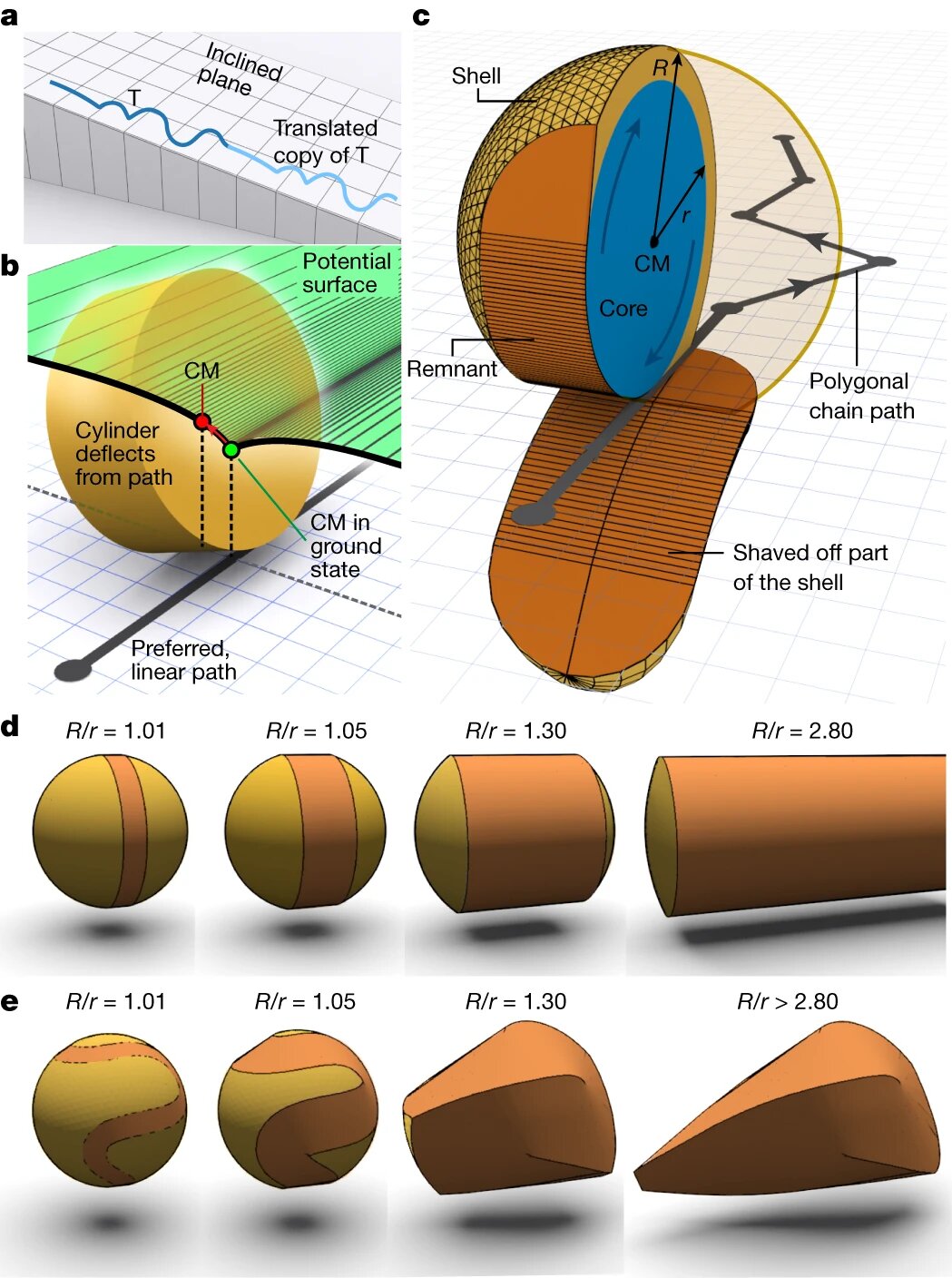A team of physicists and mathematicians at the Institute for Basic Science’s Center for Soft and Living Matter, in South Korea, working with a colleague from the University of Geneva, has developed an algorithm that can be used to find the shape of an object to cause it to roll down a ramp following a desired path.
In their paper published in the journal Nature, the group describes how they developed their algorithm, and possible uses for it. Elisabetta Matsumoto and Henry Segerman with the Georgia Institute of Technology and Oklahoma State University, respectively, have published a News & Views piece in the same journal issue outlining the work done by the team on this new effort.
In this new effort, the research team started with an interesting puzzle—one that begins by envisioning a sphere rolling down a ramp. If the sphere is imagined to be made of clay, it can be manipulated (deformed) as it rolls to make it conform to a given path.
If the sphere is then rolled down the ramp again, it will follow the previous path due to the new deformities in its shape. The researchers noted that the paths that could be taken by the sphere could be nearly limitless due to the nearly limitless possible deformations.
That realization led them to wonder if the deformations that form in such a sphere could be correlated mathematically with its path. And if so, if such math could be used to create an algorithm that could be used to 3D print a sphere with deformations that would force it to follow a predetermined path.
2023-08-13 17:24:02
Source from phys.org
